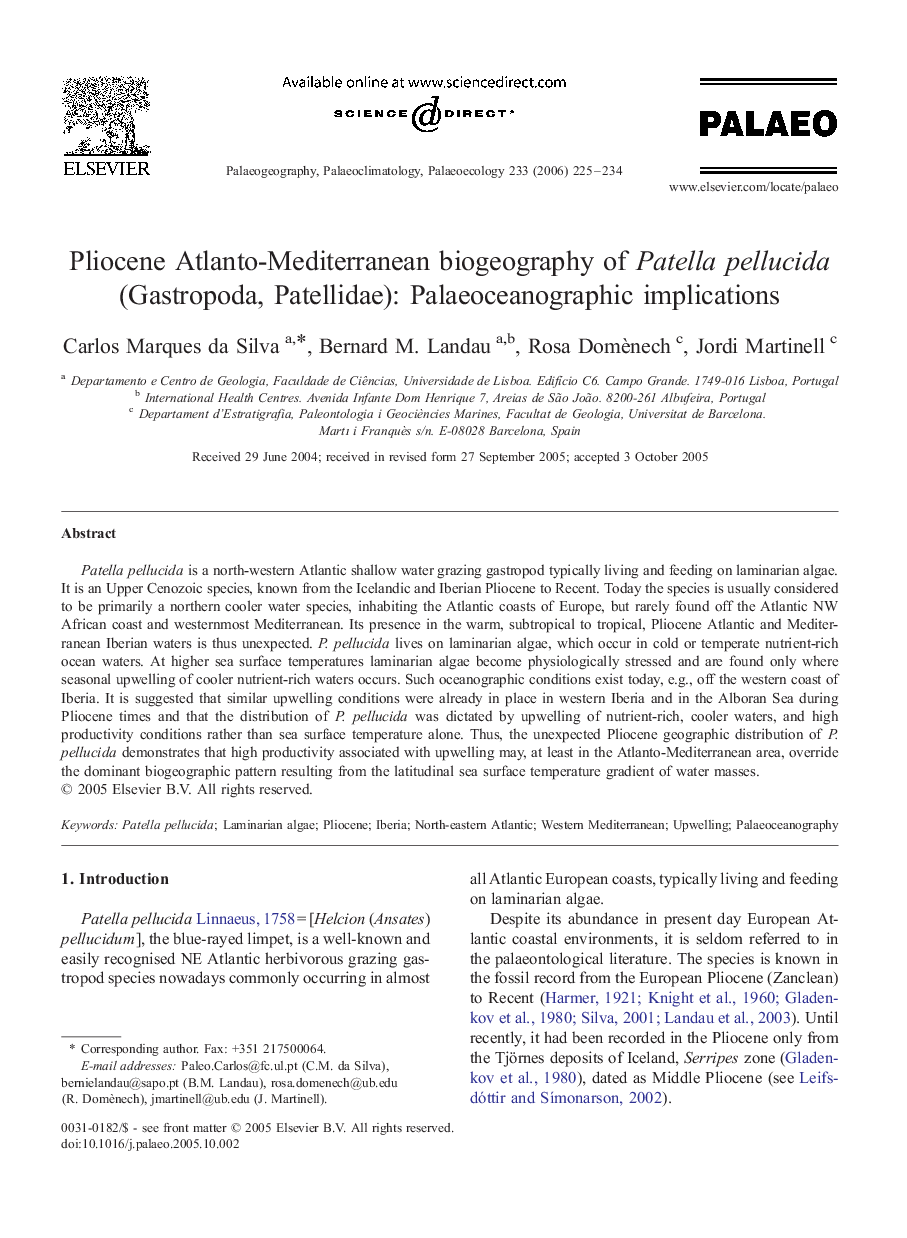| Article ID | Journal | Published Year | Pages | File Type |
|---|---|---|---|---|
| 4469497 | Palaeogeography, Palaeoclimatology, Palaeoecology | 2006 | 10 Pages |
Patella pellucida is a north-western Atlantic shallow water grazing gastropod typically living and feeding on laminarian algae. It is an Upper Cenozoic species, known from the Icelandic and Iberian Pliocene to Recent. Today the species is usually considered to be primarily a northern cooler water species, inhabiting the Atlantic coasts of Europe, but rarely found off the Atlantic NW African coast and westernmost Mediterranean. Its presence in the warm, subtropical to tropical, Pliocene Atlantic and Mediterranean Iberian waters is thus unexpected. P. pellucida lives on laminarian algae, which occur in cold or temperate nutrient-rich ocean waters. At higher sea surface temperatures laminarian algae become physiologically stressed and are found only where seasonal upwelling of cooler nutrient-rich waters occurs. Such oceanographic conditions exist today, e.g., off the western coast of Iberia. It is suggested that similar upwelling conditions were already in place in western Iberia and in the Alboran Sea during Pliocene times and that the distribution of P. pellucida was dictated by upwelling of nutrient-rich, cooler waters, and high productivity conditions rather than sea surface temperature alone. Thus, the unexpected Pliocene geographic distribution of P. pellucida demonstrates that high productivity associated with upwelling may, at least in the Atlanto-Mediterranean area, override the dominant biogeographic pattern resulting from the latitudinal sea surface temperature gradient of water masses.
